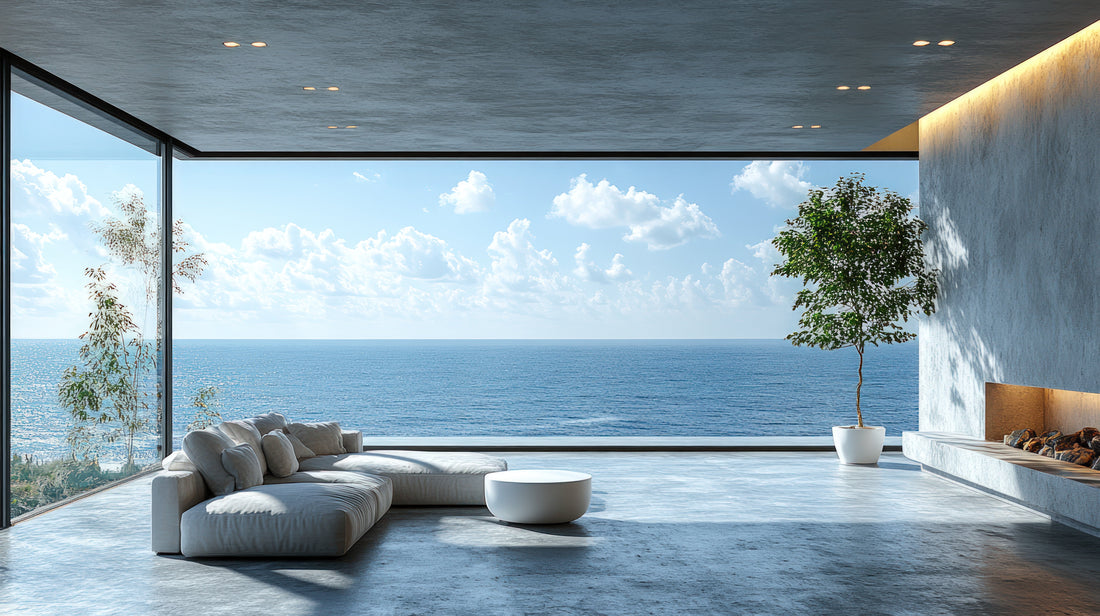
What Trending and what's ending
What’s Trending in the World of Interior Design—And Why It Won’t Last Forever
Reflections on Ephemeral Trends and the Enduring Value of Design Rooted in History
Introduction
The world of interior design is in perpetual flux, a field forever shifting in taste, style, and sensibility. Scroll through any social media feed or flip through the latest glossy magazine, and a parade of must-have looks, colors, and furniture pieces marches relentlessly by. Our homes, once sanctuaries of personal history and comfort, are now battlegrounds of aesthetics, where yesterday’s “trending” becomes today’s passé with dizzying speed. But why does the interior design world obsess over the new, the novel, and the now? And more critically—why won’t these trends endure?
Current Trends: A Kaleidoscope of the Moment
Step into almost any home featured on Instagram or Pinterest in 2025, and you’ll be met with a curated blend of influences that seem both familiar and futuristic. The hottest trends are a riotous celebration of color, shape, and self-expression. Let’s take a closer look at the most prominent:
Maximalism’s Triumphant Return
Minimalism, with its muted palette and strict discipline, has receded in favor of maximalism’s bold embrace. Walls bloom with vivid wallpapers—botanicals, animal prints, geometric patterns. Velvet sofas in emerald or sapphire anchor living rooms, surrounded by eclectic gallery walls, layered rugs, and a profusion of throw pillows. The message is clear: more is more.
Biophilic Design
After years of lockdowns and social distancing, the outside world is being invited indoors with renewed fervor. Lush houseplants climb bookcases and spill from hanging baskets. Living walls and indoor water features proliferate. Natural materials—rattan, cane, stone, and unfinished woods—are celebrated for their organic beauty and calming influence.
Bold Colors & Unexpected Pairings
2025’s color palette is not for the faint-hearted. Vibrant corals, zesty chartreuses, and deep aubergines dominate, often paired in ways that defy conventional wisdom. Accent walls in citrus shades, kitchen cabinets painted in electric blue, and the reemergence of colored bathroom fixtures all point to an era unafraid to stand out—or clash.
Kitschy, Retro-Inspired Furniture
There’s a deliberate embrace of kitsch: think oversized mushroom lamps, wavy mirrors, and glossy lacquered side tables in pop-art colors. Furniture inspired by the ‘70s and ‘80s—plush boucle chairs, Lucite coffee tables, and modular sofas—evoke a playful nostalgia that feels both familiar and subversive.
Tech-Integrated Living
Smart home technology is no longer hidden; instead, it’s being celebrated. Touchless faucets, voice-activated lighting, and media walls with integrated sound systems are designed as much for visual impact as for convenience. Curved OLED televisions hang like sculpture, and illuminated shelving doubles as digital art.
Why These Trends Captivate—And Why They Fade
The appeal of these trends is undeniable. They offer a sense of novelty, a dopamine hit of the new and the now. But their very appeal contains the seeds of their impermanence.
The Allure of the Novel - In a world saturated with content, standing out is harder than ever. Interior design trends offer an instant way to declare taste, status, and individuality. Social media, especially platforms like TikTok and Instagram, amplifies the new with algorithmic fervor—rewarding those who can quickly adopt and showcase the latest look.
Yet novelty is, by definition, ephemeral. The very things that make a trend exciting—the surprise, the shock of the new—are what exhaust their appeal. When everyone has the same squiggly mirror or terrazzo coffee table, the look loses its edge. The cycle of adoption and abandonment accelerates, leaving us chasing the next big thing before the last trend has even set in.
The Problem with Kitsch and “Statement” Pieces
Kitschy furniture and statement décor—those items that invite a double-take or a wry smile—are typically charming in isolation. But when an entire market or generation adopts mushroom lamps or neon-hued resin chairs, their uniqueness is diluted. These pieces become less about self-expression and more about conformity, ironically undermining the individuality they promise.
Moreover, such pieces are rarely invested with the craftsmanship or material integrity of classic designs. They are mass-produced, often disposable, and designed for the camera rather than the long haul.
This fleeting cycle breeds a peculiar restlessness in both designers and homeowners, as the pressure to reinvent and refresh becomes its own kind of aesthetic treadmill. Once-celebrated pieces risk becoming visual clichés, stripped of their original wit and impact by ubiquity. The market, always ready to capitalize on the next wave, churns out replicas and knock-offs, further eroding the authenticity that gave the trend its spark.
As trends morph and multiply, there’s a quiet counter-movement taking root: a longing for substance over spectacle. Savvy collectors and design enthusiasts begin to seek items with personal resonance and enduring craftsmanship, favoring the meaningful over the merely fashionable. In this climate, the question isn’t just what’s “in,” but what endures—what continues to delight long after the initial dopamine rush fades.
Ultimately, the dance between novelty and nostalgia, spectacle and sincerity, shapes every corner of our living spaces. The most memorable interiors are those that manage to weave fleeting trends into a tapestry of lasting significance, finding delight in the new without losing sight of the timeless.
Their appeal is visual and immediate, but rarely enduring.